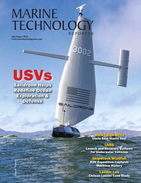
DriX USV Takes Part in Military Exercise in Bahrain
Vehicle (USV) fleet of one hundred drones in the Gulf by the end of the summer.The current geopolitical situation means that manned assets are in increasing demand elsewhere, leading the Navy to look to the latest unmanned technologies to expand its capabilities. Vice Adm. Brad Cooper, commander of U.S. Naval Forces Central Command, U.S. 5th Fleet and Combined Maritime Forces, set up Task Force 59 last year to speed new tech integration across the 5th Fleet, and seek alternative, cost-effective solutions for conducting Maritime Domain Awareness (MDA) missions. Maritime Domain Awareness can be defined
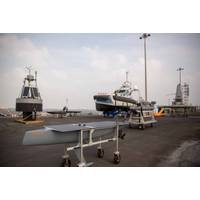
US Kicks Off Unmanned & AI Systems Integration Event in Bahrain
;s first unmanned surface vessel fleet by end of next summer. U.S. 5th Fleet’s efforts are focused on improving what U.S. and regional navies are able to see above, on and below the water.“I am excited about the direction we are headed,” said Vice Adm. Brad Cooper, commander of U.S. Naval Forces Central Command, U.S. 5th Fleet and Combined Maritime Forces. “By harnessing these new unmanned technologies and combining them with artificial intelligence, we will enhance regional maritime security and strengthen deterrence. This benefits everybody.”Cooper established a staff
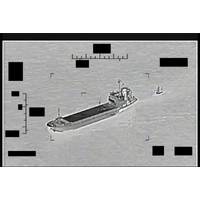
Iran Caught Trying to Capture US Navy Sea Drone
Baziar towing a Saildrone Explorer USV in an attempt to detain it. U.S. Navy patrol coastal ship USS Thunderbolt (PC 12) was operating nearby and immediately responded. U.S. 5th Fleet also launched an MH-60S Sea Hawk from Helicopter Sea Combat Squadron 26, based in Bahrain.The actions taken by U.S. naval forces in response resulted in the IRGCN vessel disconnecting the towing line to the USV and departing the area approximately four hours later. The U.S. Navy resumed operations without further incident.“IRGCN’s actions were flagrant, unwarranted and inconsistent with the behavior of a
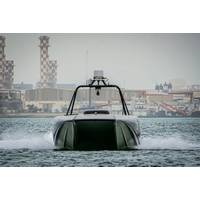
Navy Establishing Unmanned Surface Vessel Fleet for Persistent ISR in Middle East
“We're not tinkering. We're building enhanced maritime domain awareness.”The U.S. Navy’s Task Force 59, based in Bahrain as part of the U.S. Naval Forces Central Command (NAVCENT) and U.S. Fifth Fleet, is advancing the operational employment and integration of unmanned systems and artificial intelligence in fleet operations.According to Vice Adm. Brad Cooper, the fleet commander, unmanned systems and artificial intelligence are helping to accelerate innovation, especially in such a vast area of responsibility (AOR)“It's 5,000 miles from the Suez Canal all the way
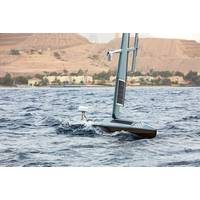
NAVCENT Launches Saildrone in Gulf of Aqaba for Exercise Digital Horizon
U.S. Naval Forces Central Command (NAVCENT) began operationally testing a new unmanned surface vessel (USV) in the Gulf of Aqaba, Dec. 12, as part of an initiative to integrate new unmanned systems and artificial intelligence into U.S. 5th Fleet operations.NAVCENT commenced exercise Digital Horizon while launching a Saildrone Explorer USV into the water for the first time from the Royal Jordanian naval base in Aqaba, Jordan. Last month, U.S. and Jordanian naval leaders announced the base would become a joint hub for Saildrone operations in the Red Sea.“These are exciting times for Task Force 59
UK, France, US Sign Trilateral Submarine Agreement
Naval leaders from the United Kingdom, France and the United States signed an agreement June 1, designed to increase coordination for anti-submarine warfare activities of the three countries as they operate in the 5th Fleet area of operations. Commander, U.S. Naval Forces Central Command (NAVCENT) Vice Adm. Kevin M. Donegan signed the trilateral agreement with Vice Adm. Louis-Michel Guillaume, commander, French Submarine and Strategic Oceanic Forces (ALFOST) and Rear Adm. Robert K. Tarrant, commander, Operations of the Royal Navy, at Donegan's headquarters in the Kingdom of Bahrain.
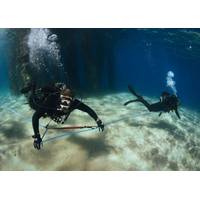
Divers Highlight Interoperability in Finding, Neutralizing Mines
. Mario Fink, from Kiel, Germany, who is commanding the IMCMEX task force in Kuwait. "Working together to know the ability of the different nations and to be familiar with circumstances of this very important area is an important goal of IMCMEX." Vice Adm. Kevin Donegan, commander, U.S. Naval Forces Central Command, visited the operations April 14 and toured with Maj. Gen. Khaled Abdullah, commander of Kuwait's Naval Forces. "This exercise is about enhancing cooperation, maritime capabilities and interoperability between international partners," said Donegan.
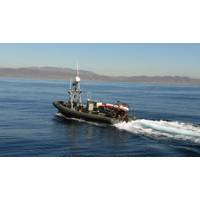
Mine Detection Robot Performs in Bahrain
As the demand for naval technology rapidly escalates globally, the Middle East remains a hotspot for investment and innovation. To this end, Northrop Grumman Corporation (NYSE: NOC), in support of U.S. Naval Forces Central Command in Manama, Bahrain, announced the successful demonstration of an unmanned mine-hunting mission. In the demonstration, the Mine Hunting Unmanned Surface Vehicle (MHU) was used in tandem with Northrop Grumman's AQS-24A Mine Detecting Sensor System in the Arabian Gulf. The demonstration highlighted the unmanned capabilities of the MHU in deploying, towing and recovering
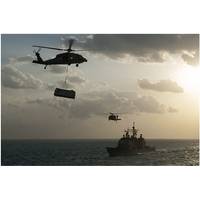
Middle East Maritime Security: Cooperation is the Key Vital
Vice Adm. John Miller, U.S. Navy, commander, U.S. Naval Forces Central Command (NAVCENT), U.S. 5th Fleet, Combined Maritime Forces (CMF) , spoke to delegates attending the IQPC Offshore Patrol Vessel (OPV) Middle East 2013 conference just after participating in the 8th International Institute For Strategic Studies (IISS) Manama Dialogue to discuss the development and implementation of regional security and provided a platform for leaders from more than 30 countries to engage in inter-governmental dialogue on sensitive regional issues. At OPV Middle East 2013, attended by members of navies and
 August 2025
August 2025


